In a recent blog, Gray analyzed enrollment trends for three nursing programs: a Bachelor of Science in Nursing (BSN), an Associate Degree in Nursing (ADN), and a Licensed Practical Nursing (LPN) diploma or certificate. Enrollment in all three programs has fallen in recent years, hinting at a prolongation of the current nursing shortage if employment demand remains higher than the number of new graduates.
As a follow-up, we decided to take a look at job posting trends to get insights into employer demand for entry-level nurses. Specifically, we tracked the volume of job postings for the first half of 2023 compared to the same time period in 2022 for registered nurses (RNs) and licensed practical nurses (LPNs).
What we found was a bit surprising, and perhaps a sign that supply and demand may be leveling off, at least for now, after the disruptions of the past few years.
RN Job Postings and Salaries Decline in 2023
From January to June 2022, employers posted over 829,000 jobs for registered nurses. In the same time period one year later, the number of job postings dropped to ~588,000, a decline of 29 percent in total job postings. Of note, job postings for all occupations across the US fell by 27 percent, so the decline in RN job postings was ever so slightly higher.
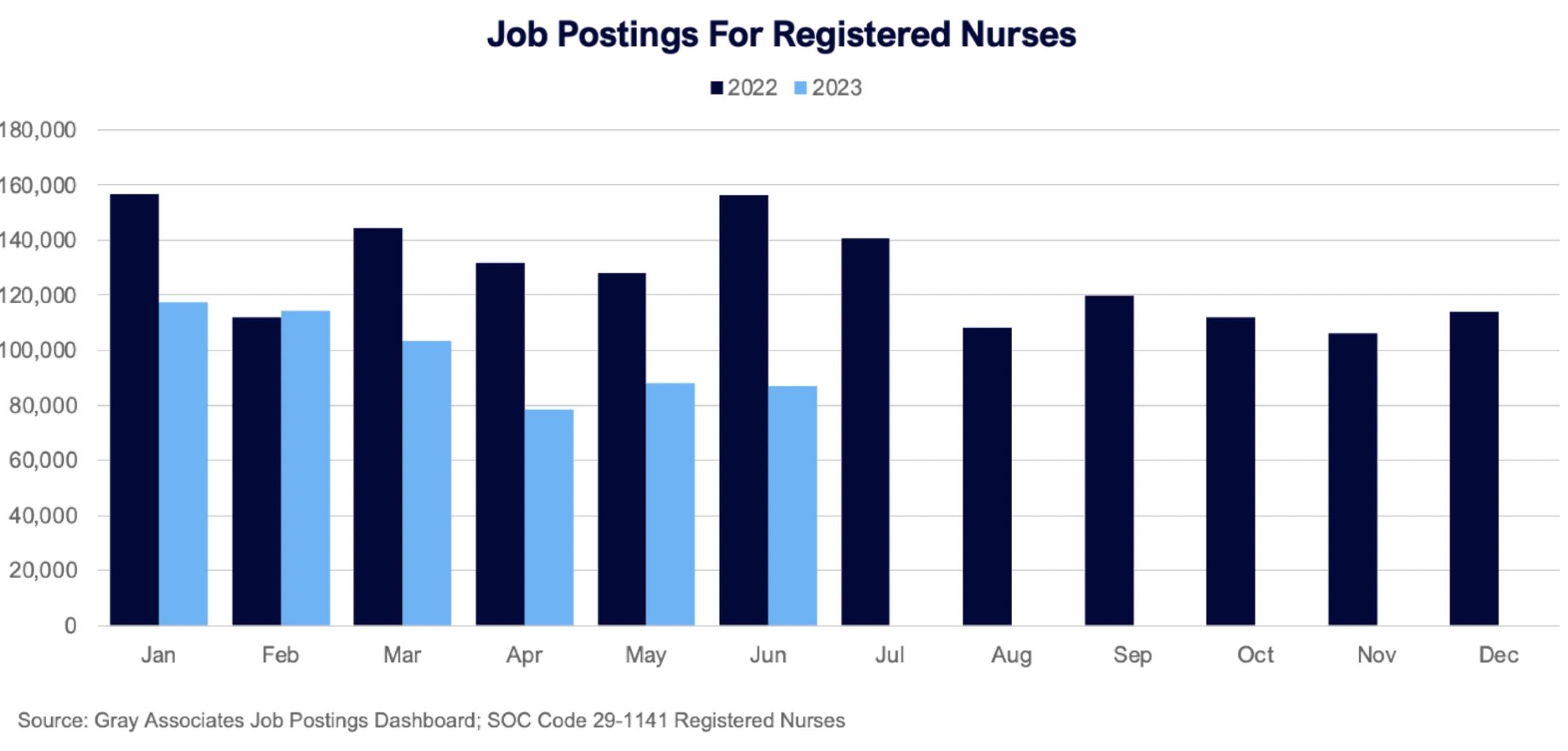
As with most job postings, these RN jobs represent a combination of churn (e.g., RNs moving from one job to another or leaving the profession for other types of jobs), retirements, and new job growth. With 252,944 ADN and BSN graduates in 2021 (the latest year for which data is available from IPEDS), job posting volumes in both years still far outpace the number of new graduates entering the workforce. But the year-over-year decline in RN job postings may suggest the disconnect between supply and demand narrowed a bit during the first half of 2023.
Another indicator that supply and demand may be leveling off is that average salaries for RN jobs in the first half of 2023 were down every month compared to 2022. The decline ranged from four percent in January to 30 percent in February. One explanation may be that competition for candidates is not as intense as it was last year thus the salaries employers need to offer have come down. Other reasons for the drop in average salaries could be the types of jobs being posted (e.g., fewer high-paying travel nurses jobs) or changes in the employers posting RN jobs.
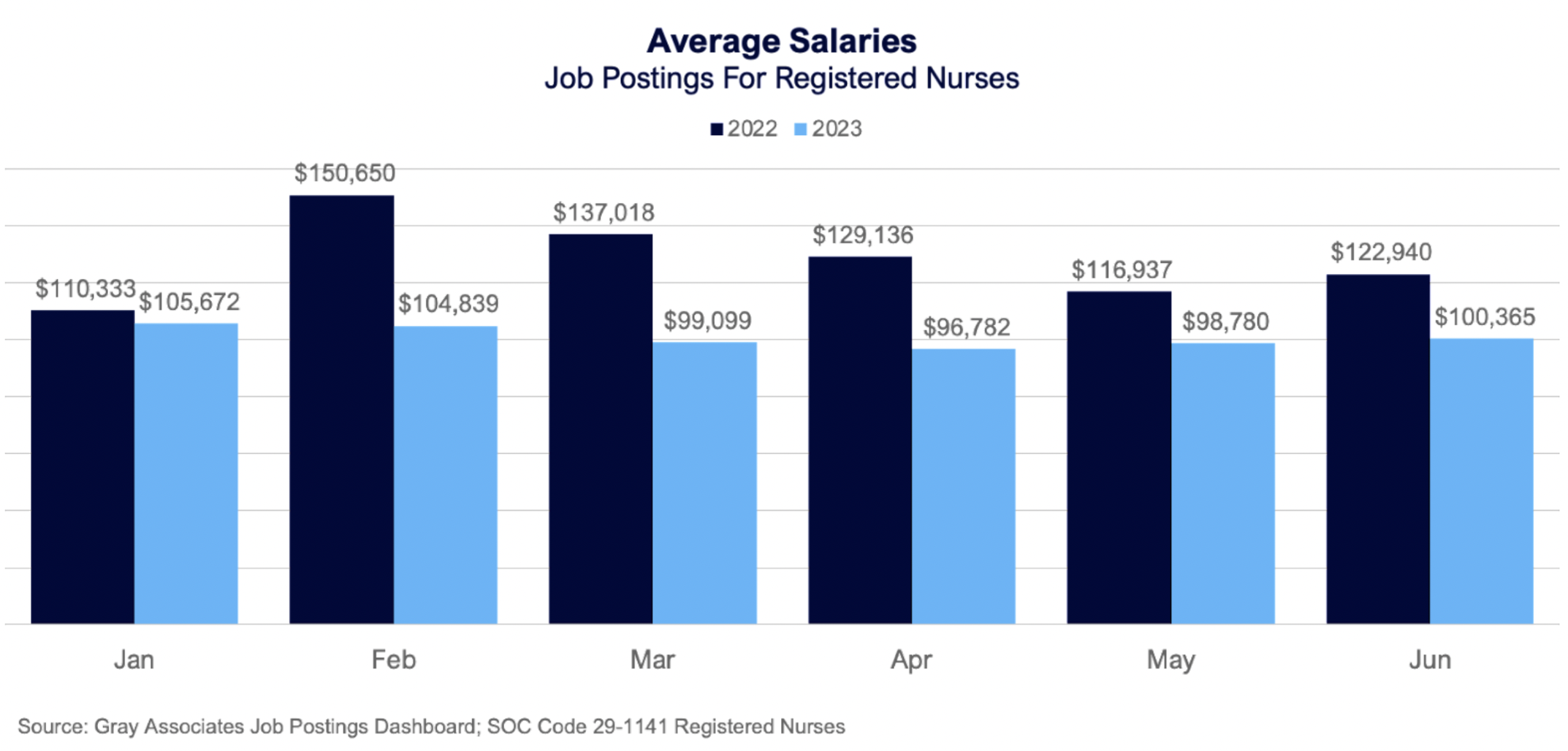
Adding Some Perspective
All that being said, it is important to add some perspective. Registered nurses continue to be one of the most in-demand occupations in the country. Even with the year-over-year decline in job-posting volumes, RNs were the third largest occupation by job postings in the US from January to June 2023, accounting for five percent of total job postings. So while job postings for RNs have declined, they remain at very high levels relative to other occupations.
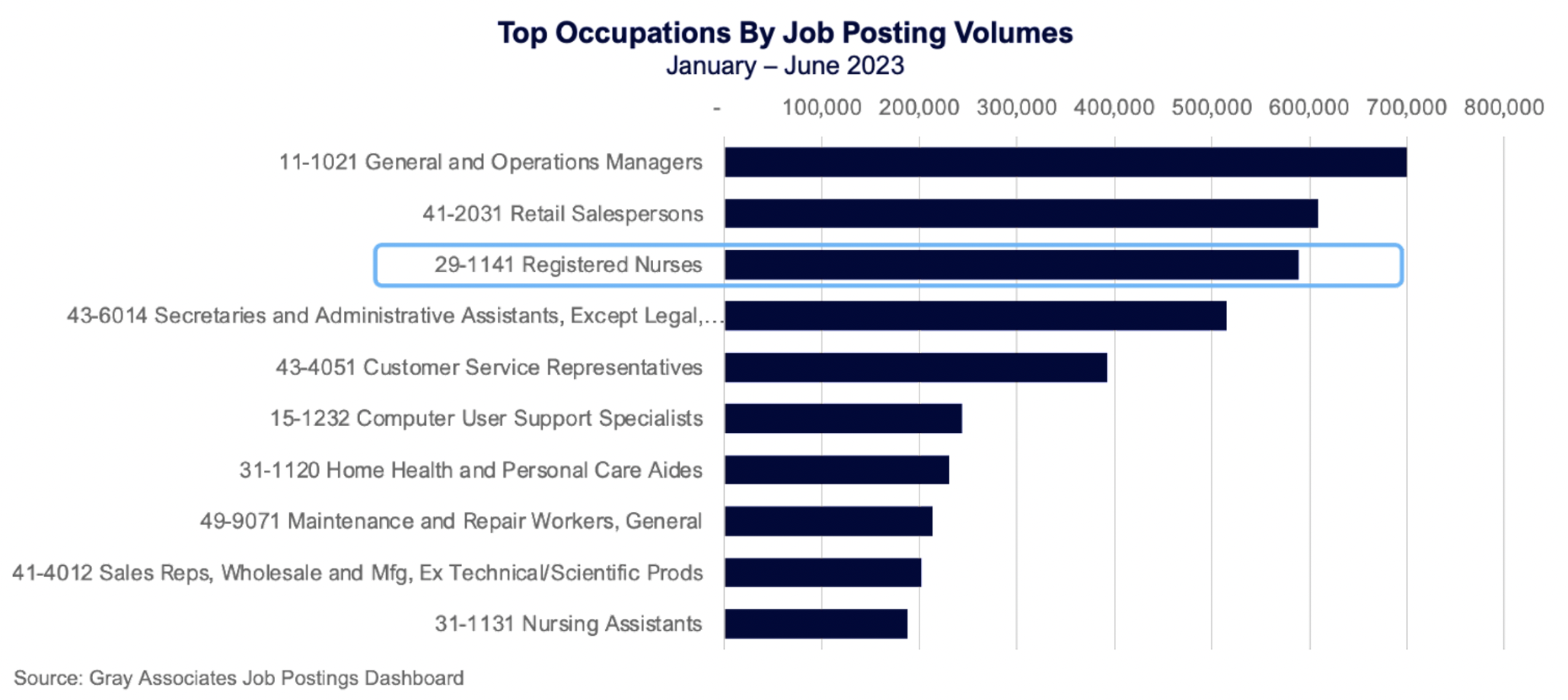
LPN Job Postings Down But Salaries More Stable
As with RN job postings, there was a year-over-year decline in job postings for Licensed Practical Nurses (LPNs), although the decline was less steep (a 15 percent YoY decrease) and below the national average of a 27 percent decline in job postings.
Through the first half of the year, employers posted ~137,000 jobs for LPNs in 2022 compared to ~116,000 jobs in 2023. There were 43,728 LPN completers (certificate level) in 2021, so demand is still outpacing the supply and employment opportunities for new graduates remain strong.
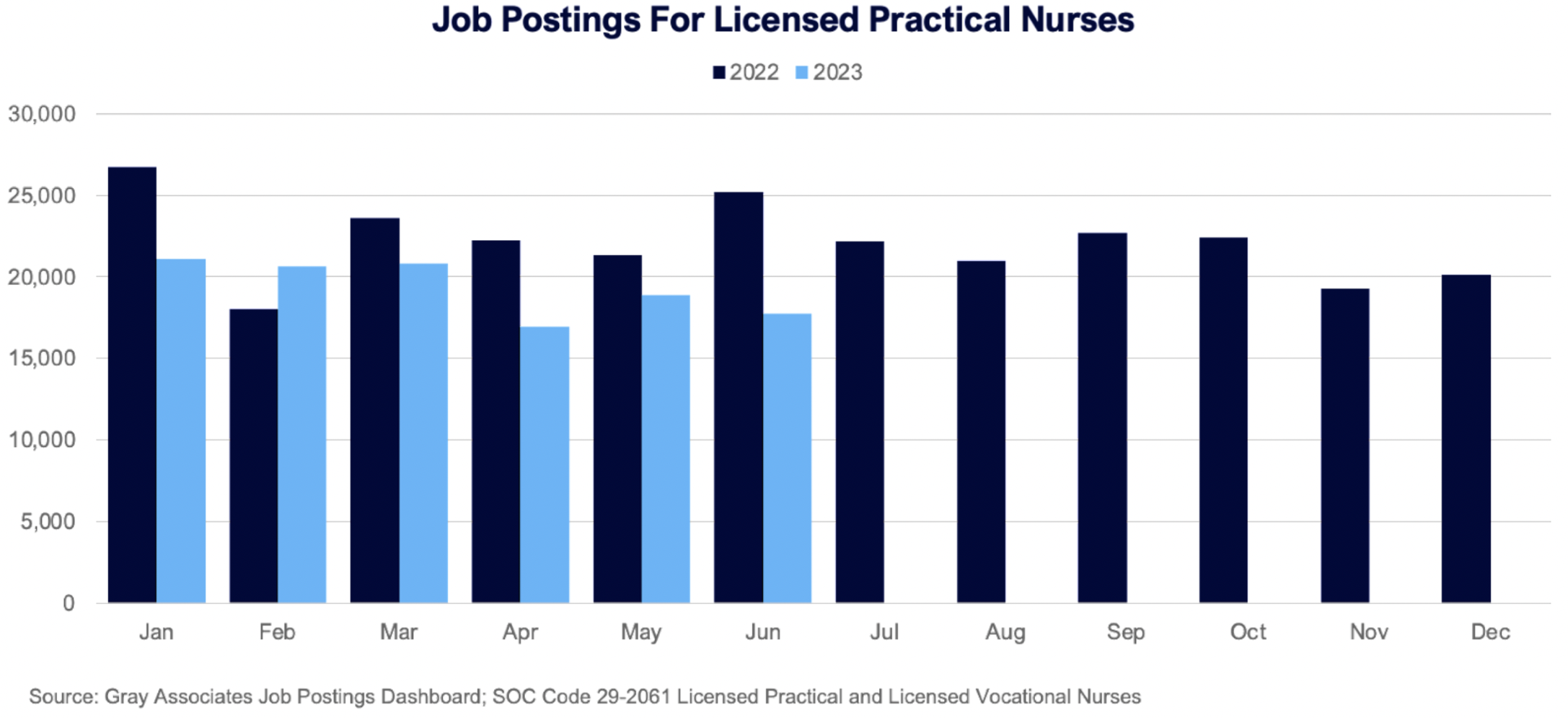
Interestingly, average salaries for LPN job openings did not experience the same drop-off we saw in RN job postings. Although average LPN salaries were down in five of the six months in 2023 compared to 2022, the decline was less significant, ranging from a one percent drop in February to a four percent drop in April. In January 2023, average LPN salaries were higher by eight percent compared to the previous year.
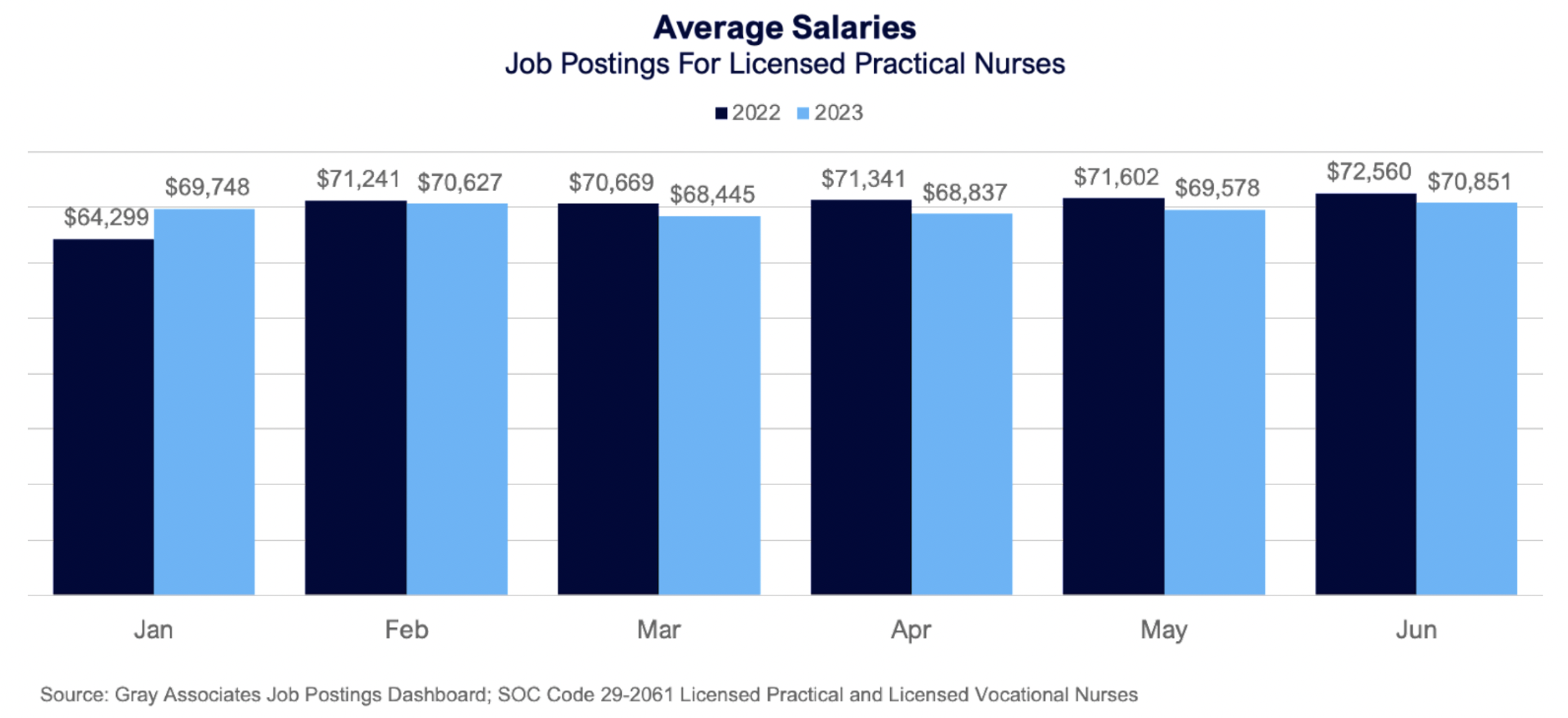
What Does This Mean for Nursing Programs? It’s Complicated
So what does this all mean for the nursing shortage, and nursing programs in general? It’s complicated.
Based on labor market data alone, it may appear that the opportunity for growth in nursing programs is flat or dropping. But it is important to consider that while job posting volumes for nurses declined in the first half of 2023 compared to 2022, the sheer volume of postings remains far higher than the number of graduates produced each year.
And labor market data alone does not tell the whole story. Educators (and labor market economists, for that matter) also need to consider trends in student demand (e.g., enrollment, completions, search volumes) to understand the pipeline of future graduates available to fill jobs not just now, but in the future. With a recent drop in new enrollments in nursing programs, the number of new nurses entering the workforce seems poised to decline, not grow. This could prolong, or even exacerbate, the nursing shortage.
We are seeing evidence that some healthcare entities and employers remain concerned and are taking actions to increase the pipeline of new nurses, which is good news for nursing educators. For example, Mass General Brigham and UMass Boston recently announced a $20 million investment to recruit and retain nursing students from underrepresented communities. In Florida, AdventHealth and Orlando Health pledged $10 million to help fund a new nursing building at the University of Central Florida that they hope will add 150 new nurses to each graduating class.
Nurses are a crucial pillar of the healthcare industry, providing important care and support to patients. Ensuring that the supply of new nurses entering the workforce keeps pace with demand will be essential to the future of our healthcare system.




